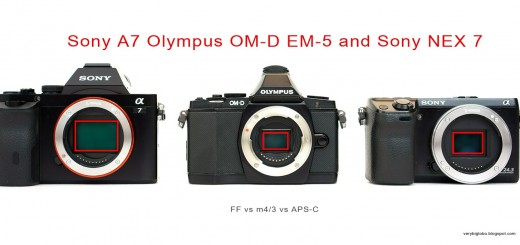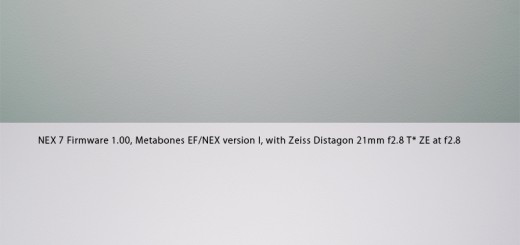Zeiss Milvus 50/1.4 vs Zeiss Otus 55/1.4 vs Zeiss Planar 50/1.4 – Comparative Lens Review
During testing of three Zeiss 85mm lenses – http://www.verybiglobo.com/zeiss-milvus-851-4-vs-zeiss-otus-851-4-vs-zeiss-planar-851-4-comparative-lens-review-2/2/ we spent some time with their 50(55)mm versions too. Large portion of our findings from already mentioned – 85mm review, can be simply copy pasted here, with exception of Milvus 55/1.4 bokeh, which does show some onion ring effect, because it have aspherical element in its optical design (unlike its 85 counterpart).
Before we start with the review, we’d like to write few words about lens testing in general. If you don’t want to read it, just go to the 2nd. page in the above navigator.
Understanding lens testing and related limitations
Even with the LAB tests, it is almost impossible to create 100% fair playground for all candidates, because of too many variables involved in the image processing, including optical deviations caused by sensor covers, camera chamber reflections, micro-lenses, production tolerances, in camera RAW software corrections etc.
With the field tests, this is just more complicated, because we have to deal with change of light, lack of large monitors for focus control and last but not least – live subjects that are permanently moving.
Lenses might be also tested on the optical bench or other, sensor independent measuring device, or their performance figures could be synthetically created, but even if the first method will give most reliable results in terms of optical qualities, same might have little impact on a real life pictures, because cameras those lenses will be used on, will contribute (in good and bad) to the final results.
Respected review sites are giving us (lens/camera) system achieved results but that’s why cross-platform comparisons are hardly relevant, no matter how fancy awarding and evaluation method is created and presented.
On top of system based results, most resolution chart based tests are performed at close to minimum focus distances, where another bunch of limitations arise, not to speak about lens optimization for a certain focal length, usually closer to the infinity (While with floating element lens design, focal plane distance deviations are minimized, they are still present, especially with the zoom lenses).
100% even lighting on the test chart (very difficult to achieve), 100% exact alignment (nightmare), 100% elimination of possible shutter shake and 100% accuracy in achieving critical focus are all necessary if we want to get closer to “absolute” comparison between two systems.
Even if all that is accomplished successfully, proper test should include representative number of production samples, in order to eliminate production variations.
All that being said, I know that almost every lens that I ever tested was somehow different, has stronger and weaker sides and is certainly unique enough to represent specific view to the captured scene. This is why comparing lenses make sense, but it is very important to clarify what are we comparing and what we want to find out with such a comparison.
This review is attempting to compare 3 Zeiss DSLR lenses, of the same focal length and same maximum aperture, not to find which one is best, but to give our readers different point of view on obtained data and images, in order to help them decide, which one will serve better their purpose.
We did our best to give you comparable results, but keep in mind, that with super shallow DOF, high-resolution sensors, breathing subjects, inability to check for critical focus etc., field test results shouldn’t be considered as a merit for absolute sharpness e.g. They are serving purpose of indicating rendering characteristics, (such as field curvature, highlight rendering, CA, spherical aberration, practical importance of distortion, flare resistance etc.)
>To help this page survive, your donation will be highly appreciated.
















regarding the manual focusing. I recently tried the Zeiss 85mm f/1.4 Milvus with the new D5 and I think that the the smaller focus points may make it possible to manual focus with the lens. Unfortunately, I did have a few issues, for some reason the focus point wasn’t visible for some reason on the D5, when manually focusing, I was told that the camera didn’t have release firmware. But when I reviewed the shot, it did show where the focus point was placed and the image did look sharp. So fingers crossed it is a big improvement.
Great, let us know how it works for you at full opened aperture, once you manage to fine tune it.
Cheers,
Viktor
I don’t own the D5, so it might be a while, I do want to try it with the D500, to see if the camera will manual focus accurately with the added pixel density of the camera, which will be closer to a D820 (I am guessing it will have more than 36mp).
Where would you put the Zeiss 50mm makro-planar in this equation of Milvus, Otys and classic planar? I see you have done a review of macro 50mm lenses but I believe the classic makro-planar belongs here due to f2 speed and focal length.
Personally I’m impressed that a planar design performs so well wide open at f2 but I don’t know how it compares to the new Milvus. The Otus, I know what to expect as I have 135mm f2 APO.
Hi Nat,
I haven’t compare macro lenses directly, I reviewed Milvus 50/14 and compared it with Otus 55 and Classic Planar 50. Macro Planar 50/2 was optimized for the short distances where it achieves very good resolution figures in the center of the frame. As a most macro lenses it has rather flat focus field and very long focus thread. I don’t know where I will put it in the above mentioned comparison, because I didn’t test it for other usage than product shots (mainly short working distances). I am very happy with the lens for that type of work.
Hope it helps,
Viktor
Thank you for your reply. I guess it’s apples to oranges in a way. People used to compare makro-planar to the f1.4 classic back when there were only two Zeiss 50mm lenses. Nowadays it’s 4 50mm lenses from Zeiss alone not to mention the offerings from third parties such as Tamron Sigma and Nikon already has more than 10 lenses in the 50mm range.
So far I’m happy with 50mm f2 zf as a general purpose lens. Zeiss 25mm f2 is slightly superior with off center resolution and coma (but it is a distagon that has aspherical and anamalous elements ). The 25mm f2 is then trashed by 135mm f2 APO if I attempt a technical comparison and go off-focus and off-axis.
Hi Viktor, so I finally got to test the 85 milvus vs. the loxia side by side. I can’t tell you which is sharper. What I can tell you is that I purchased milvus 85 and it’s on its way – what a gorgeous lens!
Anyway, I’m also thinking of picking up the milvus 50. I understand its optical pros/cons about as well as I can based off your literature/testing (please keep up the great work!), and others.
What I’m curious about is the feel of the focus on the milvus 50. I was concerned about the stiffness on 85 before I got it, but it does not bother me. Is the 50 focus stiffer than the 85?
Hi Micah,
sorry for the late reply. Congrats on your new lens, Milvus 50 has same focus stiffness as 85, don’t worry.
Cheers,
Viktor
thank u very much for this review, i am art photographer and user of 50mm 1.4 planar ZE and love it much
Actually Zeiss lenses aren’t that hard to nail focus with. You need to train first but after that it’s a lot easier.
Don’t trust the red focus point blink, instead look for focus/ae lock in the camera viewfinder.
Hi Gustav and thank you for the opinion. I don’t trust red blinker, but at open apertures, it is very difficult to nail eyeball instead of eyebrows in my experience. Could be just me though…
Cheers,
Viktor